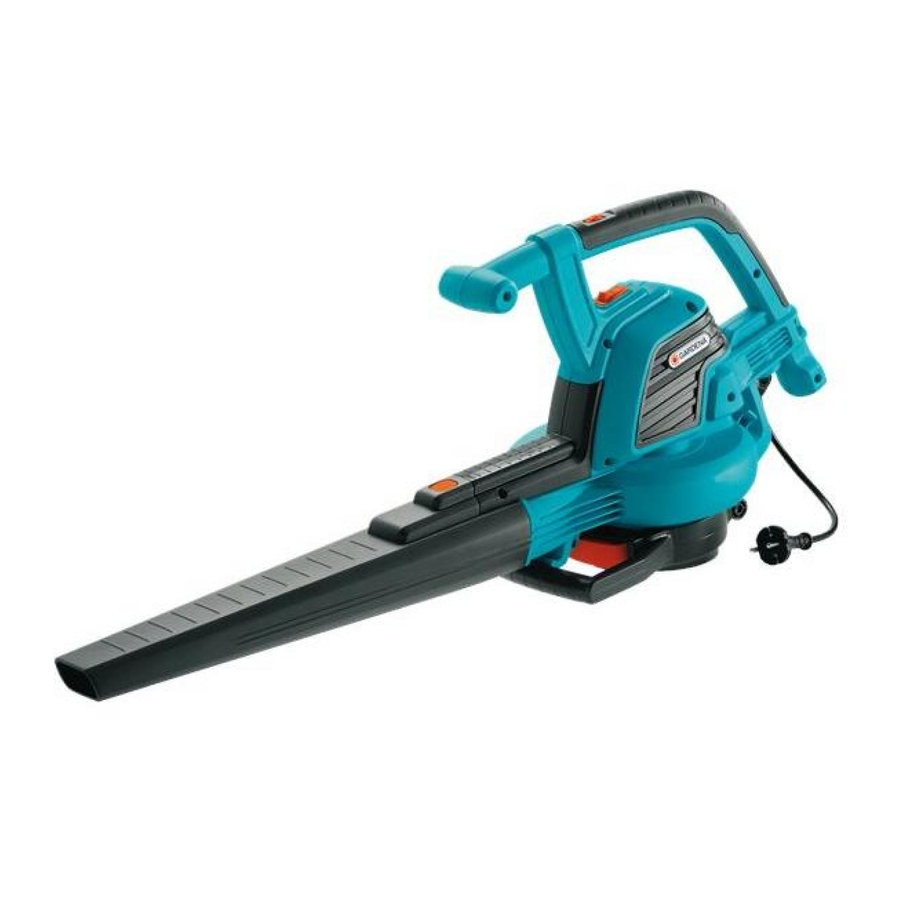operating power tools may result in serious
personal injury.
b) Use personal protective equipment.
Always wear eye protection and hearing
protection. To prevent dust irritation,
the use of a dust mask is recommended.
Protective equipment such as eye protection,
hearing protection, dust mask, nonskid safety
shoes, or hard hat used for appropriate
conditions will reduce personal injuries.
c) Prevent unintentional starting. Ensure the
switch is in the off position before connecting
to power source, picking up or carrying the
tool. Carrying power tools with your finger on
the switch or energising power tools that have
the switch on invites accidents.
d) Do not overreach. Keep proper footing
and balance at all times. On slopes, be extra
careful and wear nonslip footwear. Do not
walk backwards while operating your product.
Walk, never run. Do not use ladders while
operating the product. This enables better con-
trol of the power tool in unexpected situations.
e) Dress properly. Always wear suitable
clothing, gloves, and stout shoes.
Do not wear loose clothing or jewellery.
Keep your hair, clothing and gloves away
from moving parts. Loose clothes, jewellery or
long hair can be caught in moving parts.
4) Power tool use and care
a) Only use the product in the manner and for
the functions described in these instructions.
Always direct the cord to the rear, away from
the product. Do not force the power tool. Use
the correct power tool for your application.
The correct power tool will do the job better and
safer at the rate for which it was designed.
b) Always make sure your product is in a safe
operating condition before use. Do not use
the power tool if the switch does not turn it
on and off. Know how to stop the product
quickly in an emergency. Any power tool
that cannot be controlled with the switch is
dangerous and must be repaired.
c) The impeller continues to rotate after
your product has been switched off.
The motor must be stopped and the impeller
blade no longer turning to avoid serious injury
from the rotating blades.
d) Disconnect the plug from the power source:
– before removing or replacing fully assembled
debris bag;
– before leaving the product unattended for any
period;
– before clearing a blockage;
18
– before checking, cleaning or working on the
appliance;
– if the product starts to vibrate abnormally.
Check immediately. Excessive vibration can
cause injury.
– before passing to another person.
e) Store idle power tools out of the reach of
children and do not allow persons unfamiliar
with the power tool or these instructions
to operate the power tool. Power tools are
dangerous in the hands of untrained users.
f) Maintain power tools. Check for misalign
ment or binding of moving parts, breakage
of parts and any other condition that may
affect the power tool's operation. If damaged,
have the power tool repaired before use.
Keep all cooling air inlets clear of debris.
Many accidents are caused by poorly maintained
power tools.
g) Use the power tool and accessories in
accordance with these instructions, taking
into account the working conditions and the
work to be performed. Use the product only
in daylight or good artificial light. Use of the
power tool for operations different from those
intended could result in a hazardous situation.
5) Maintenance and storage
Have your power tool serviced by a qualified
repair person using only identical replace
ment parts.
This will ensure that the safety of the power tool
is maintained.
– Keep all nuts, bolts and screws tight to be sure
the product is in a safe working condition.
– Replace worn or damaged parts for safety.
– Use only genuine replacement parts and
accessories.
– Inspect the debris bag regularly. If the debris
bag becomes worn or damaged, replace.
– Store in a cool dry place and out of reach of
children. Do not store outdoors.
Blower safety warnings
• Inspect the area before using the unit.
Remove all debris and hard objects such
as rocks, glass, wire, etc., that can ricochet,
be thrown, or otherwise cause injury or
damage during operation.
• Never run the unit without the proper
equipment attached. When used as a blower,
always install a blower tube. Use only recom-
mended attachments to prevent personal injury.
• Do not use blower near leaf or brush fires,
fireplaces, barbecue pits, ashtrays, etc.
Proper use of the blower will help avoid
spreading fire.

